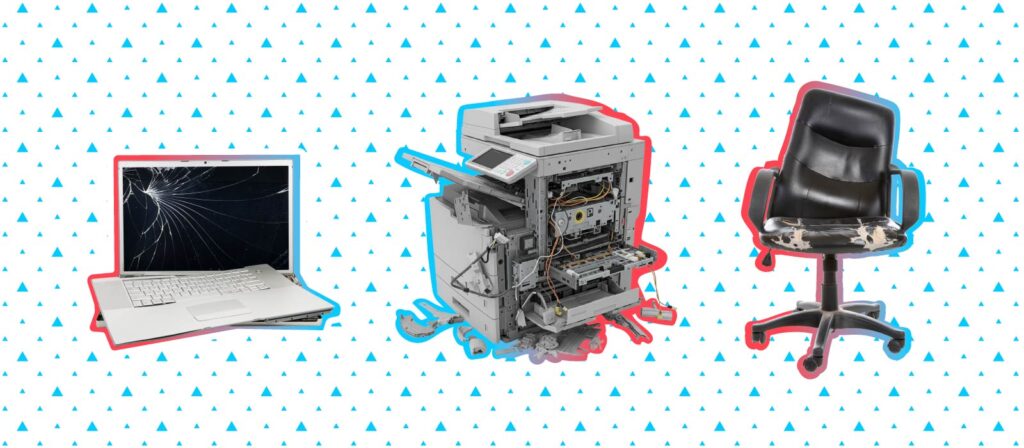
Have you ever considered exactly how much data is created on the internet every single day? According to an IBM Marketing Cloud study, 90% of the data on the internet has been created in the last two years alone, with the over 3.8 billion internet users across the planet generating roughly 2.5 quintillion bytes of data per day. With this extraordinary wealth of data available right at our fingertips, it’s safe to assume that many organizations use this data to inform important business decisions.
Well—not necessarily. According to a survey designed to see whether or not organizations truly value data, fewer than 50% of companies claimed to highly value data in business decision making. This means that more than half of organizations surveyed rely simply on their gut or on a blind hunch when making critical business decisions. This may be a mistake, because if there’s one thing we know for certain in this ever-changing world, it’s that there are undeniable benefits to incorporating data into daily operations.
Facilities management is one important area that can benefit tremendously from a data-driven approach.
Not only can data-backed information offer invaluable insights into day-to-day operations, but it can help facility managers identify areas where money is being wasted or space is being underutilized.
For companies that have yet to adopt a data-driven decision making process, the transition may seem daunting. How do you actually go about collecting data, and then how do you turn that data into actionable information? Believe it or not, it’s not hard to adopt a data-driven approach—all it requires is a proactive mindset and the right facility management software.
Step 1: Get rid of the guesswork

This really should go without saying, but guesswork, intuition and estimations have no place in the world of data-driven decision making. In fact, only 40% of best-in-class companies base major business decisions on gut feel, as opposed to 70% of laggards. Basing your business decisions on what you think is right rather than what the data shows you is the best choice is a dangerous gamble.
The right facilities management software has the ability to provide FMs with invaluable, evidence-based insights for how to optimize the function of an office. Whether you’re formatting your floor plan, ordering in inventory or allocating company assets, analytics will provide you with visibility so that you don’t have to make any decisions blindly. For instance, using space utilization software will help you make informed spatial decisions, which could allow you to properly format your office floor plan. Considering how important the lay out of your office is, it only makes sense to rely on hard data rather than your best guess.
Step 2: Create insightful reports
Reporting and analytics can provide FMs with a number of benefits, including a better understanding of the way their facility is operating. By generating useful reports, FMs can keep track of company-wide assets and inventory, which will assist in informing how you allocate assets while simultaneously lowering company expenditure.
For example, ordering new office supplies shouldn’t be a routine task. Money can easily be wasted on unnecessarily reordering—when you already have two boxes of toner refills sitting in the closet, you really don’t need more. Reports are key to ensuring you are only ordering what the company needs and nothing more.
Step 3: Integrate with existing systems

Part of the appeal of adopting a data-driven approach to facilities management is the opportunity to integrate with your existing systems. By pooling all of your information, you can create the most comprehensive picture possible, helping you make better business decisions across the board.
OfficeSpace comes equipped with a robust API, allowing you to integrate with everything from lease management software to communication apps like Slack and Skype. Because of this, there’s no need to overhaul your entire network to make room for new software—a quality facilities management tool should work in harmony with your existing applications, rather than forcing you to invest in an array of other new programs. Basically, your facilities management software should allow business to continue as usual, only better.
Above all, what a data-based approach to facilities management allows is the agency to effectively forecast your company’s future. By understanding what kind of impact your decisions have had in the past, you’ll be able to refine your strategy for the future. With the help of this data, you’ll have a good grip on what your actions are doing and how changing your behavior will affect your operations and, most importantly, your bottom line. This is the true advantage to data-driven facilities management, and it cannot be overstated.
For more information on how OfficeSpace can help you make data-driven decisions, request a free demo today.
Photo Credits: Shutterstock / Jacob Lund, Shutterstock / sirtravelalot, Shutterstock / RobertZac



